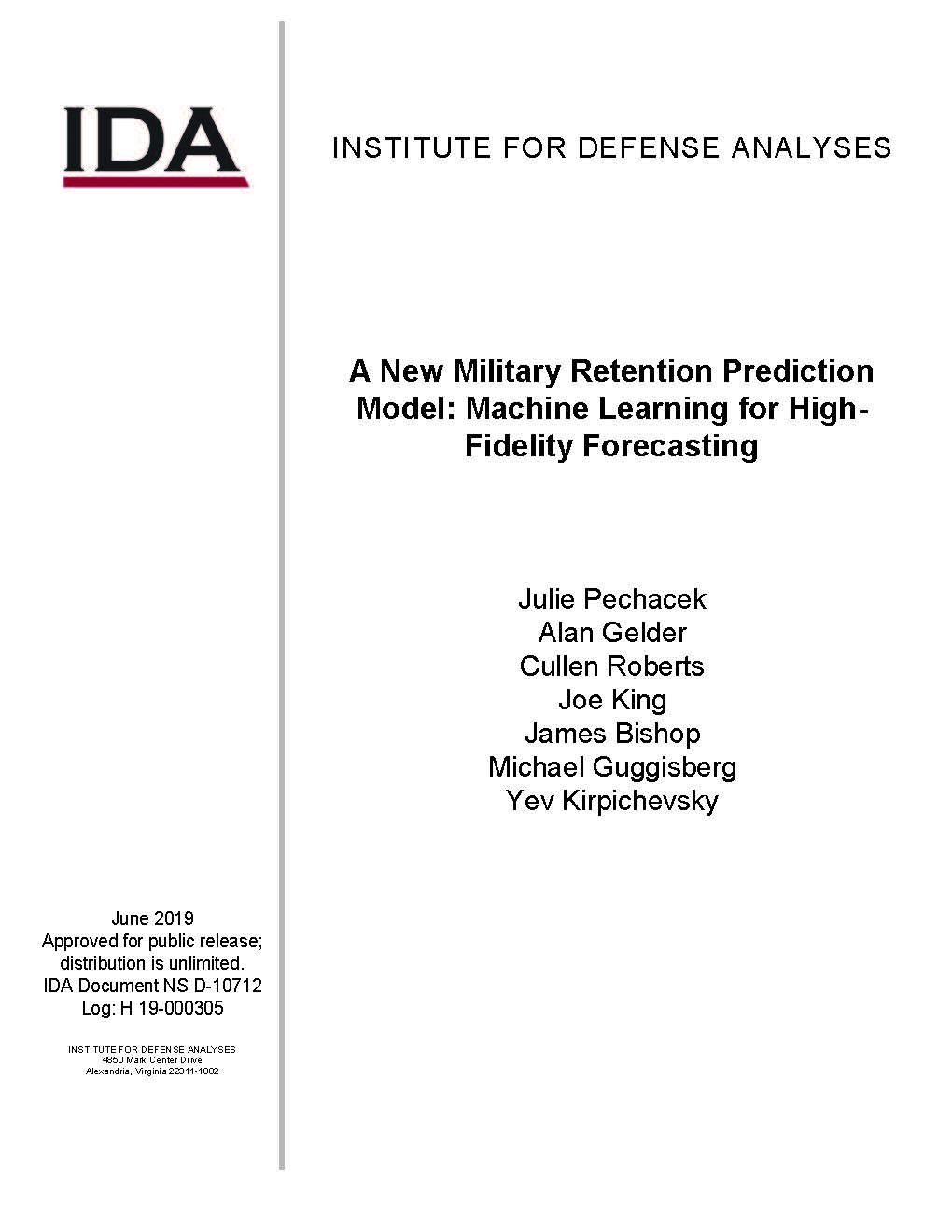A New Military Retention Prediction Model: Machine Learning for High-Fidelity Forecasting
June, 2019
IDA document: D-10712
FFRDC: Systems and Analyses Center
Type: Documents,
Talent Management
Division: Strategy, Forces and Resources Division
Authors:
IDA document: D-10712
FFRDC: Systems and Analyses Center
Type: Documents
Division: Strategy, Forces and Resources Division
Authors:
Authors
Julie Pechacek, Alan Gelder, Cullen Roberts, Joe King, James Bishop, Michael Guggisberg, Yev Kirpichevsky
See more authors

